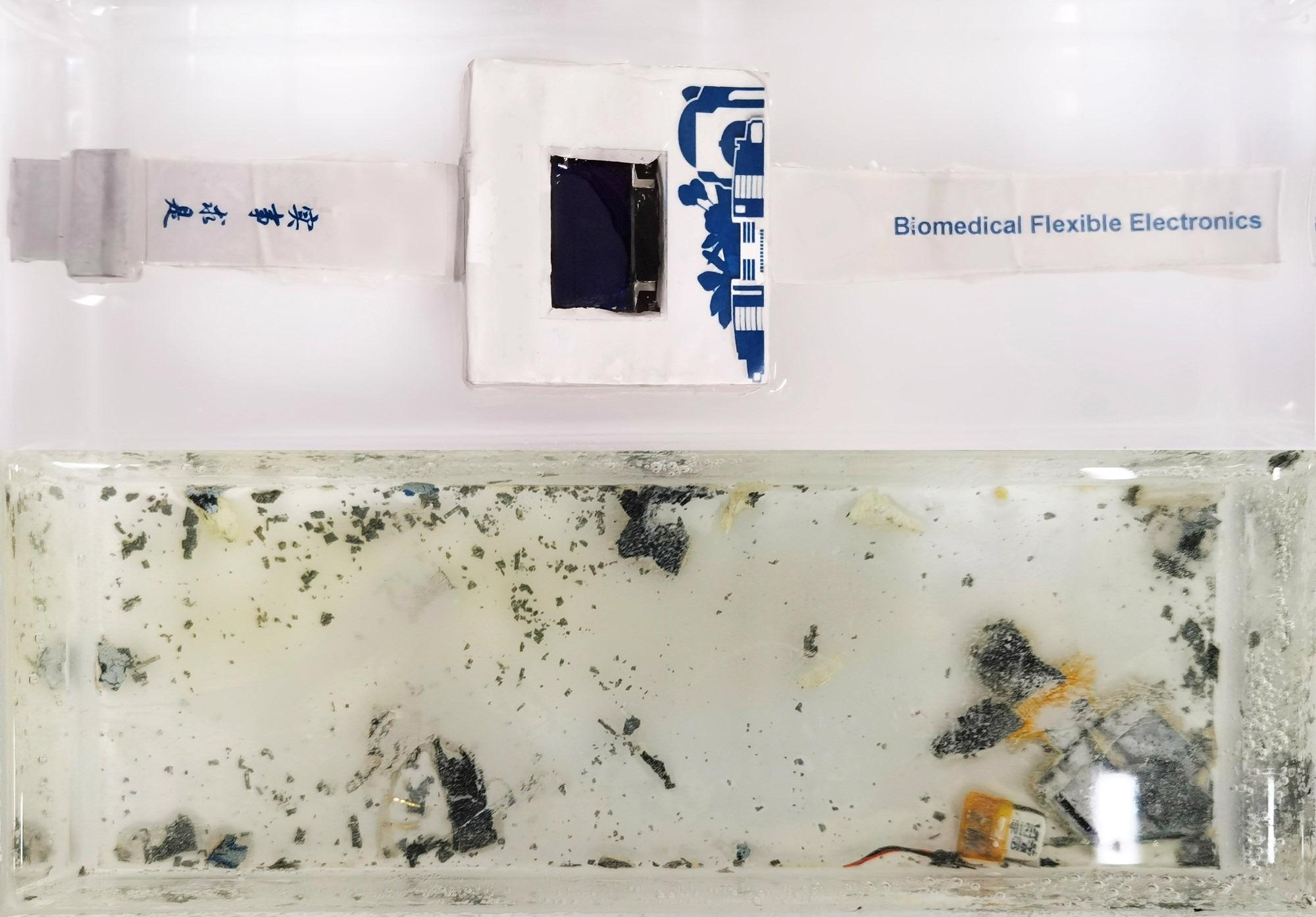Reviewed by Alex SmithAug 5 2021
Small electronics such as fitness trackers and smartwatches cannot be dismantled and recycled easily. Whenever a new model is launched, the old ones are dumped into the hazardous waste streams.
 A prototype smartwatch made with zinc-silver nanocomposite circuits inside a poly(vinyl alcohol) case (top) dissolves in water within 40 hours (bottom). Image Credit: Adapted from ACS Applied Materials & Interfaces, 2021.
A prototype smartwatch made with zinc-silver nanocomposite circuits inside a poly(vinyl alcohol) case (top) dissolves in water within 40 hours (bottom). Image Credit: Adapted from ACS Applied Materials & Interfaces, 2021.
To resolve this issue, scientists have developed a two-metal nanocomposite for circuits that break down upon submerging in water. The scientists explained the circuits through a prototype transient device, which is an operational smartwatch capable of dissolving within 40 hours.
The research was reported in the journal ACS Applied Materials & Interfaces.
The nature of becoming outdated and the quicker technology innovations facilitate the arrival of new devices that are constantly replacing the old models. This generates millions of tons of electronic waste year on year. Recycling leads to a reduction in e-waste volume and is mandatory in several places.
However, it is not often worth enough to recycle small consumer electronics because it needs to be salvaged by hand, involving steps such as acid leaching and open burning, which could lead to health issues and environmental pollution. Devices that can disintegrate upon demand can resolve this issue.
Earlier, Xian Huang and his team developed a zinc-based nanocomposite for temporary circuits that dissolved in water. However, it did not possess the required conductive properties for consumer electronics.
Later, the researchers attempted to enhance the electrical properties of dissolvable nanocomposites while simultaneously developing durable circuits to withstand everyday use.
The scientists altered the zinc-based nanocomposites by introducing silver nanowires, turning them highly conductive. They screen-printed the metallic solution onto pieces of poly (vinyl alcohol), which is a polymer with the property to degrade in water. They also solidified the circuit by applying small droplets of water that enable chemical reactions leading to evaporation.
Thus, the team developed a smartwatch with multiple nanocomposite printed circuit boards within a 3D printed poly (vinyl alcohol) case. The smartwatch was built on sensors with the ability to precisely measure people’s heart rate, step count, blood oxygen levels and then send the data to a mobile application through a Bluetooth connection.
The outer surface stays stable to sweat but the whole device, including the polymer case and circuits, starts degrading when fully immersed in water for more than 40 hours.
The components left behind were Organic Light-Emitting Diode (OLED) screen and microcontroller, capacitors and resistors that were installed in the circuit. According to the researchers, the two-metal nanocomposites can be applied to produce transient devices with performance equal to that of commercial models. This will lead to the solution for a problem regarding small electronic waste.
The researchers did not confirm any source of financial sources for this study.
Journal Reference:
Li, J., et al. (2021) Water-Sintered Transient Nanocomposites Used as Electrical Interconnects for Dissolvable Consumer Electronics. ACS Applied Materials & Interfaces. doi.org/10.1021/acsami.1c07102.